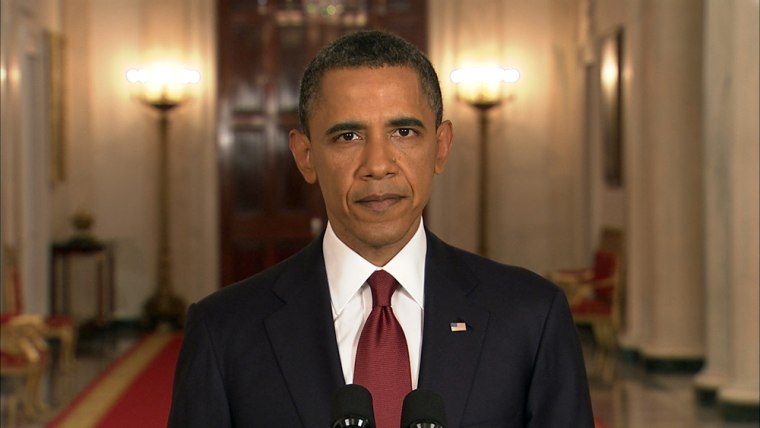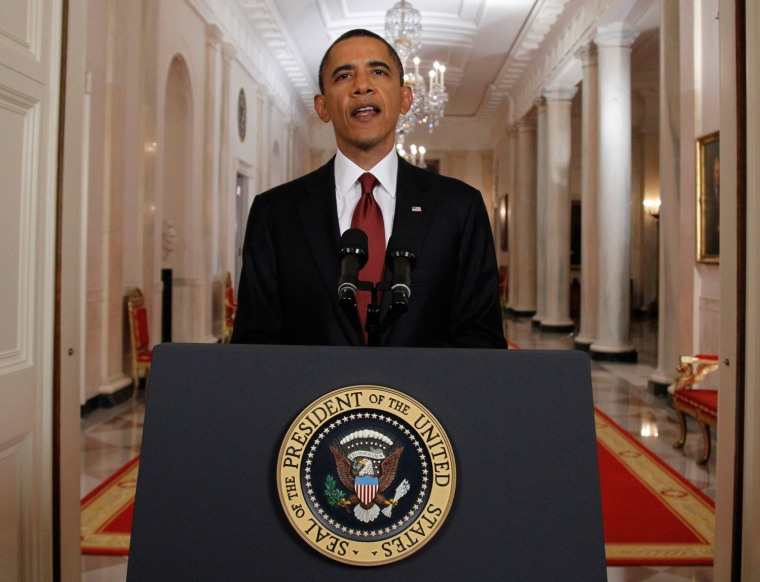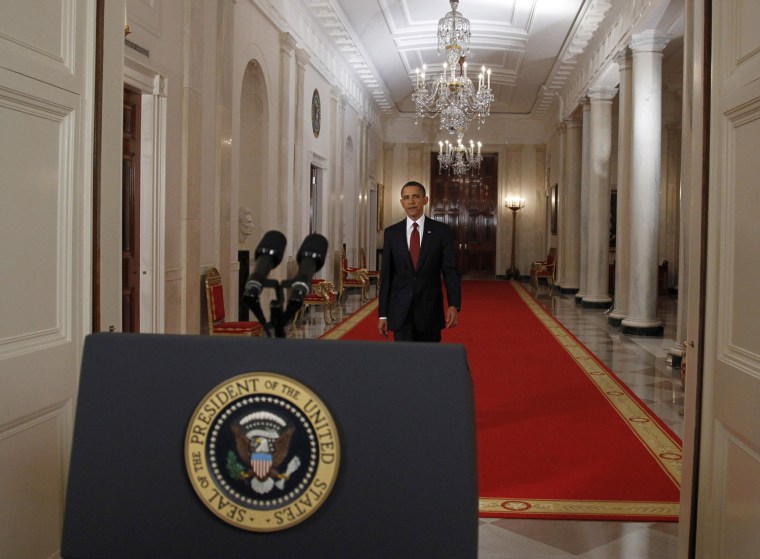Updated, May 17, 2011:
The White House said last week that they are stopping the decades-old practice of re-enactments. The New York Times' Lens Blog has a lengthy follow-up.
Original post:
Jason Reed, a White House photographer for Reuters, recounts:
Once Obama was off the air, we were escorted in front of that teleprompter and the President then re-enacted the walk-out and first 30 seconds of the statement for us.
The first image below is from the actual televised speech, the bottom two images are from the reenactment.



According to a write-up by Al Tompkins at the Poynter Institute, this has been a longstanding practice in Washington, meant to keep camera noise from disrupting televised presidential addresses. Tompkins concludes:
It is time for this kind of re-enactment to end. The White House should value truth and authenticity. The technology clearly exists to document important moments without interrupting them. Photojournalists and their employers should insist on and press for access to document these historic moments.
Having been prompted to think about this issue this week, our point of view is that there's no reason for us to show pictures of a re-enactment when we can show you screen grabs of the actual address, even if we won't have as much choice or image quality. Yesterday, we replaced still photographs we published from Sunday's re-enactment with frame grabs from HD video, and will not use photographs of re-enactments on our site in the future.